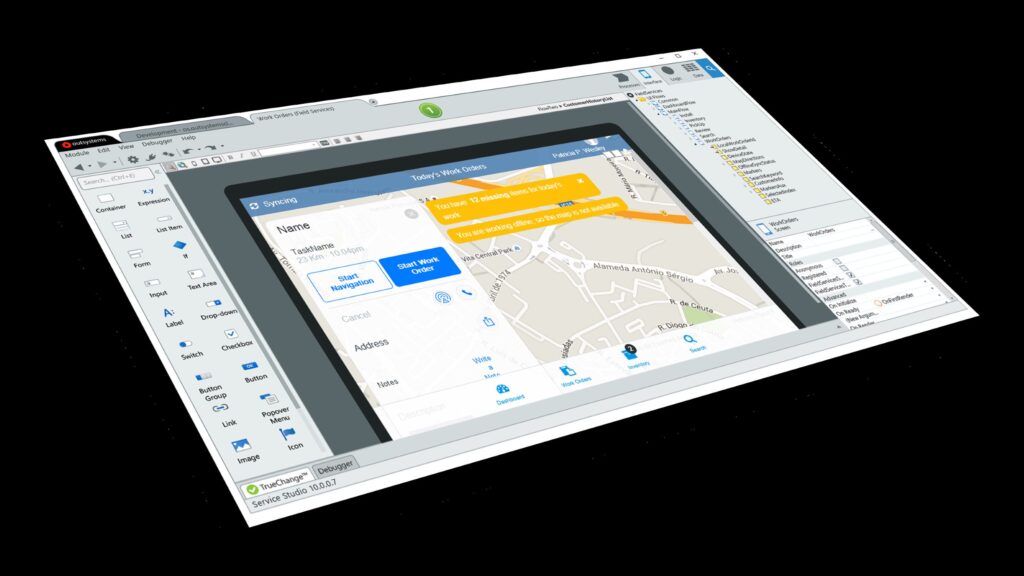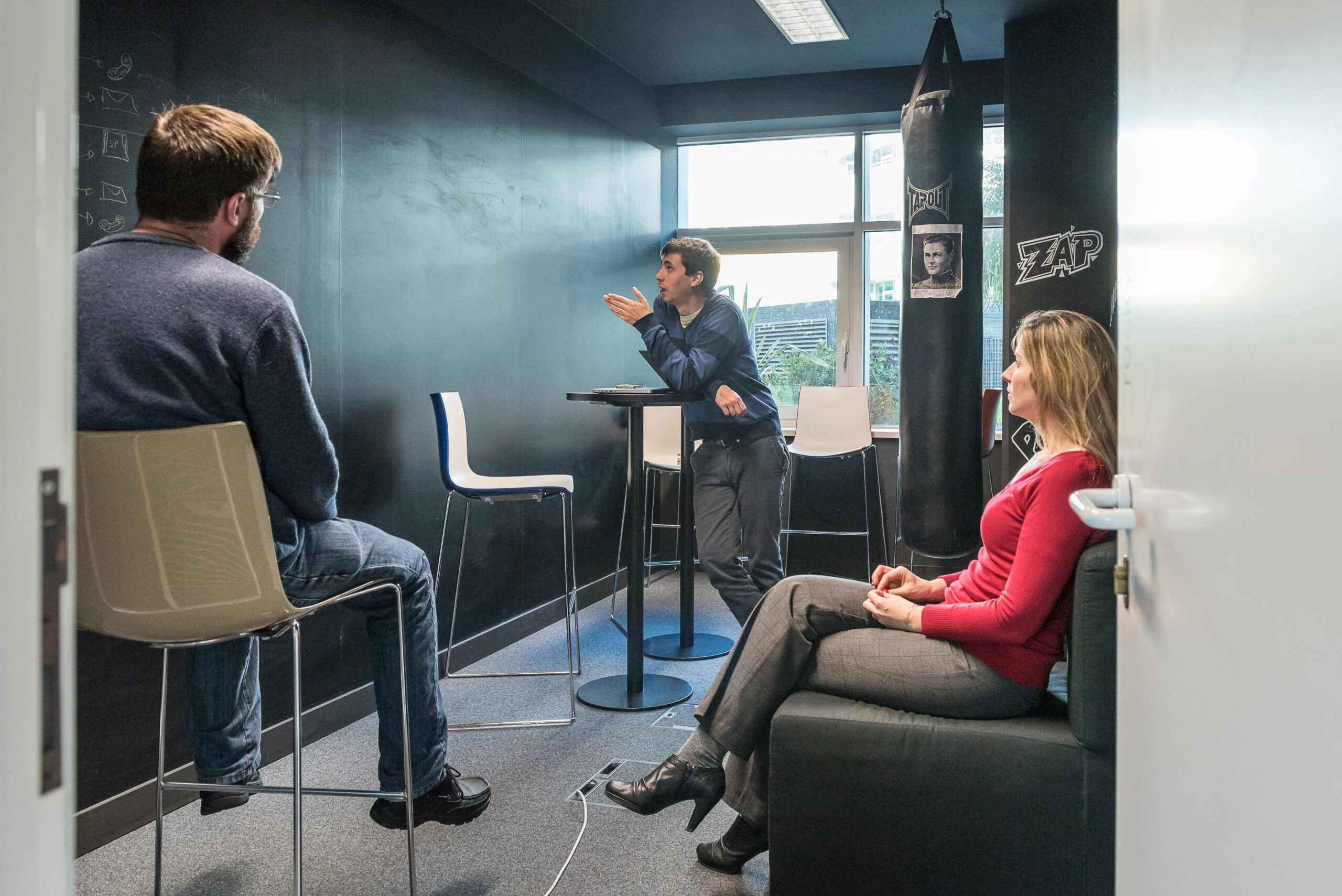
By Mark Weaser, Vice President, APAC, OutSystems
As more and more consumer transactions are carried out online, and as consumers’ expectations for digital experiences get higher and higher, digital Customer Experience (CX) is more important than ever. And this is now a critical responsibility for the CIO. But what does great CX really mean? And how can CIOs go about delivering it?
According to Gartner, more than two-thirds of companies compete mostly on the basis of customer experience. If a company offers its customers a mediocre experience, switching to the products or services of competitors is only a few clicks away.
While most CIOs were already acutely aware of this, 2020 has put additional pressure on them to deliver on their companies’ digital CX ambitions. According to the 2020 Harvey Nash – KPMG CIO Survey, customer engagement ranks alongside operational efficiency at the top of the list of priorities, as was the case in 2019. But Covid-19 has changed the purpose of what customer engagement means, with the development of new channels to market with and the creation of more and better digital experiences for customers emerging as critical.
However, being able to fulfil their company’s needs for innovation and their customers’ ever-increasing expectations means overcoming a number of hurdles confronting most CIOs intent on realizing their digital CX transformation mission.
The first is resources. IT organisations were already buried under huge backlogs, struggling to hire sufficiently qualified staff. IT still spends far too much time and energy just keeping the lights on (KTLO) with existing systems. In a recent survey of CIOs, IT leaders, and financial decision-makers, 77 per cent believed that this was a major hurdle for their organisation.
But these resource constraints exist at a time when the demands from businesses to launch new, innovative digital products to serve customers are greater than ever. In fact, most of the industry reports suggest that the majority of consumers who turned – some for the first time – to digital channels when branches were closed and call centres overwhelmed will continue to do so even after business as usual resumes.
This means that creating, maintaining, extending, and even rebuilding customer-facing applications at speed is now critical for any company that wants to thrive in 2021 and beyond. CIOs are under intense pressure to do more with less – and more quickly – than ever before.

What does great digital CX mean?
There is also a fundamental issue at play here, related to the understanding of what a great digital CX really consists of.
It might be tempting to think that a great user experience is synonymous with a great customer experience, and while that might have been the case in the first days of digital disruption, it is no longer true. Irrefutably, a user-friendly UX/UI that is beautifully designed and boasts lightning-fast performance does have a big positive impact on customer satisfaction. But great digital CX goes far beyond that:
- Great CX is effortless: customers are impatient and they expect everything to be easy and “right now”. Great customer experience is about how easy you make it to do business with you. For example, a recent study by thefinancialbrand.com shows that it can take anywhere from 21 to 120 clicks to open a new account in a bank. But it goes even beyond just clicks. Delivering an effortless experience also means:
- Allowing customers to choose how they interact with you rather than imposing a channel upon them – a good digital CX strategy means delivering applications on mobile, web, chat, voice and AR/VR so that customers can use whatever channel is most convenient to them. Using their phone’s camera to capture an image of an identification card means one-click data entry versus dozens to hand-enter all the information.
- Automating and optimising the processes that support your customer journeys – so you can deliver customer outcomes right now. Going back to the account opening example, if after only 24 clicks a customer still needs to wait five days to get confirmation on their new account because a customer service rep needs to validate their information, frustration rather than satisfaction is the most likely outcome.
- Great CX is consistent: according to Forrester, 95 percent of customers use three or more channels to interact with a company in a single service interaction. Their experience is shaped not by how great their interaction with a single channel is, but rather by a cluster of interactions across multiple channels. This means that whatever digital experiences you deliver, they must not only be top-notch in and of themselves but also truly omnichannel and unified so that customers can transition seamlessly between the various channels without having to re-enter information or repeat steps. Doing so requires a deep level of data integration so that applications can harness data from multiple systems across the company – whether it’s CRM systems, core systems or legacy applications. It also requires that you create applications that allow customer service reps to access real-time customer data easily so they can service customers effectively, when customer inquiries require human intervention.
- Great CX is personalised: some of the top reasons customers abandon digital user journeys are having to navigate a lot of information until they find what they are looking for or having to deal with complex forms that require too much manual typing. Again, ensuring you can leverage customer data to deliver personalized experiences and avoid asking customers to re-enter information you already have is critical.
- Great CX generates delight: customer expectations keep rising and their needs keep changing. Ensuring you can keep pace and continue finding new ways to delight customers is critical. This means continuously collecting customer data from your applications, iterating on them to remove friction and meet emerging customer needs, and uncovering new ways to delight customers by making their lives easier with new technologies like AI or IoT.
Great digital CX doesn’t live in a vacuum
As this list makes clear, great digital CX spans the entire waterfront of enterprise development and does not simply refer to creating new customer applications that look and behave well.
To deliver great CX, you have to address multiple areas of digital transformation. You have to automate and optimise the communication and orchestration of workflows spanning multiple services and systems, creating front-office and back-office applications that employees can use easily to respond to customer requests quickly. And you need to easily connect to, extend and even fully modernise aging systems that might not be delivering the business functionality you need to deliver a great experience on your customer applications.
The problem is that, typically, software vendors concentrate on only one of the four areas listed above: as a result, off-the-shelf software that approaches complex and inter-related problems on a standalone basis invariably requires complex integrations and extensive workarounds that hamper the delivery of good CX rather than enhance it – and do nothing to reduce the workload on the IT department. Traditional development, on the other hand, means companies take months or even years to build everything they need to achieve their ideal digital CX.
Becoming a truly customer-centric organisation – the dream state envisaged by all CIOs – requires the breaking down of technology silos and the dramatic acceleration of the speed of development – but these old approaches put them further from ever getting to the place where they can be the key drivers of their company’s digital CX transformation.
A new approach to digital CX
The time is right for a modern application platform that tackles the complex challenges of CX transformation at its root, rather than treating the symptoms individually. A platform that unifies and simplifies omnichannel development, so you can create new customer apps for any channel using a single platform and development team, moving much faster than traditional development without compromising on flexibility and quality. One that delivers consistent, omnichannel customer journeys by easily allowing the reuse of application components across your entire application portfolio. One you can use to streamline and automate the processes that support your customer journeys. A platform that can connect to and extend any system, while allowing you to modernise your legacy systems in months instead of years. All of this can enable you to create enterprise-grade applications fast, that are built for change.
Only then will CIOs be able to close – perhaps even eliminate – the gap between what the business is asking of them and what they are realistically able to deliver.

โดย มาร์ค วีเซอร์ รองประธานประจำภูมิภาคเอเชีย-แปซิฟิกของเอาท์ซิสเต็มส์
เมื่อปริมาณการทำธุรกรรมออนไลน์ของผู้บริโภคเพิ่มขึ้นอย่างต่อเนื่อง เช่นเดียวกับความคาดหวังในการได้รับประสบการณ์ที่ดีที่สูงขึ้นเรื่อย ๆ ทำให้การสร้างประสบการณ์ด้วยดิจิทัลแก่ลูกค้ามีความสำคัญอย่างที่ไม่เคยเป็นมาก่อน ถือเป็นหน้าที่สำคัญของผู้บริหารเทคโนโลยีสารสนเทศระดับสูง (CIO) ในการเข้ามาจัดการในส่วนนี้ ทว่าการสร้างประสบการณ์ลูกค้าที่ยอดเยี่ยมคืออะไร? และผู้บริหารไอทีจะสามารถนำเสนอได้อย่างไร?
ข้อมูลจากการ์ทเนอร์ (Gartner) ระบุว่า บริษัทกว่าสองในสามเน้นการแข่งขันกันนำเสนอประสบการณ์ลูกค้าในระดับพื้นฐานซะเป็นส่วนใหญ่ ทำให้หากมีบริษัทใดที่สามารถเพิ่มประสบการณ์ที่ดีต่อลูกค้าในสินค้าหรือบริการขึ้นเพียงเล็กน้อย เช่น การคลิกหน้าจอเพียงไม่กี่ครั้ง ลูกค้าก็จะหันไปเลือกซื้อสินค้าหรือบริการของคู่แข่งนั้น ๆ อย่างง่ายดาย
แม้ว่าผู้บริหารไอทีส่วนใหญ่จะตระหนักถึงเรื่องนี้ แต่สถานการณ์ที่เกิดขึ้นในช่วงปี 2563 ได้เพิ่มแรงกดดันในการนำเสนอประสบการณ์ที่ดีด้วยดิจิทัลให้แก่ลูกค้าตามเป้าหมายของบริษัท ผลสำรวจความคิดเห็น Harvey Nash – KPMG CIO Survey ประจำปี 2563 ชี้ว่า สำหรับองค์กรต่าง ๆ การสร้างความผูกพันระหว่างลูกค้ากับองค์กรถือเป็นภารกิจสำคัญอันดับต้น ๆ เทียบเท่าการปรับปรุงประสิทธิภาพการดำเนินงาน เช่นเดียวกับที่เกิดขึ้นเมื่อปี 2562 แต่สถานการณ์โควิด-19 ก่อให้เกิดความเปลี่ยนแปลงในวัตถุประสงค์ของการสร้างความผูกพันระหว่างลูกค้ากับองค์กร กล่าวคือ บริษัทต่าง ๆ จำเป็นต้องพัฒนาช่องทางทางการตลาดใหม่และสร้างสรรค์ประสบการณ์ดิจิทัลที่หลากหลายและดียิ่งขึ้นให้แก่ลูกค้าอย่างเร่งด่วน
อย่างไรก็ตาม เพื่อตอบสนองความต้องการขององค์กรสำหรับการสร้างสรรค์นวัตกรรมและความคาดหวังที่เพิ่มสูงขึ้น ผู้บริหารไอทีจำเป็นต้องเอาชนะอุปสรรคต่าง ๆ เพื่อพลิกโฉมประสบการณ์ดิจิทัลที่ดีให้แก่ลูกค้า
อุปสรรคข้อแรกเป็นเรื่องของทรัพยากร ทุกวันนี้ฝ่ายไอทีต้องวุ่นวายอยู่กับงานที่ล้นมือและดิ้นรนว่าจ้างบุคลากรที่มีความเชี่ยวชาญอย่างเพียงพอ และฝ่ายไอทียังต้องใช้เวลาและความพยายามอย่างมากเพียงเพื่อที่จะดูแลระบบที่มีอยู่ให้ทำงานได้อย่างต่อเนื่อง จากผลสำรวจความคิดเห็นของซีไอโอ ผู้บริหารไอที และผู้มีอำนาจในการตัดสินใจด้านการเงิน พบว่า 77 เปอร์เซ็นต์มองว่าเรื่องนี้เป็นอุปสรรคที่สำคัญสำหรับองค์กร
แต่ข้อจำกัดเรื่องทรัพยากรเกิดขึ้นในช่วงเวลาที่องค์กรมี จำเป็นต้องเปิดตัวผลิตภัณฑ์ดิจิทัลที่แปลกใหม่เพื่อตอบโจทย์ความต้องการของลูกค้า ที่จริงแล้วรายงานด้านอุตสาหกรรมส่วนใหญ่ชี้ว่า ผู้บริโภคส่วนใหญ่ที่หันไปใช้ช่องทางดิจิทัล (ซึ่งบางคนไม่เคยใช้ช่องทางนี้มาก่อน) เพราะห้างร้านต่าง ๆ ปิดทำการและมีผู้ใช้บริการคอลเซ็นเตอร์จำนวนมากจนคู่สายไม่ว่างจะยังคงใช้ช่องทางดิจิทัลต่อไปหลังการแพร่ระบาดสิ้นสุดลงและธุรกิจกลับเข้าสู่ภาวะปกติอีกครั้ง
นั่นหมายความว่าการสร้าง ดูแลรักษา ขยาย และปรับเปลี่ยนแอปพลิเคชันที่ให้บริการแก่ลูกค้าจะต้องดำเนินการอย่างรวดเร็วฉับไว เพื่อให้บริษัทอยู่รอดและประสบความสำเร็จในปีนี้และในอนาคตข้างหน้า ด้วยเหตุนี้ผู้บริหารไอที จึงมีความกดดันอย่างมากในการทำงานให้รวดเร็วและมีประสิทธิภาพมากขึ้น ขณะที่ต้องใช้ทรัพยากรน้อยลง

การสร้างประสบการณ์ที่ยอดเยี่ยมให้กับลูกค้าด้วยดิจิทัลหมายถึงอะไร?
เบื้องต้นต้องทำความเข้าใจเกี่ยวกับองค์ประกอบสำคัญของประสบการณ์ดิจิทัลที่ยอดเยี่ยม ซึ่งประกอบด้วย
บางคนอาจเข้าใจว่าประสบการณ์การใช้งานที่ดี (UX) มีความหมายเหมือนกับการสร้างประสบการณ์ที่ดีให้กับลูกค้า (CX) แม้ว่าเรื่องนี้อาจเป็นความจริงในช่วงแรก ๆ ที่มีการปรับใช้เทคโนโลยีดิจิทัลอย่างกว้างขวาง แต่ปัจจุบันไม่ได้เป็นอย่างนั้นอีกต่อไป แน่นอนว่า UX/UI ที่ใช้ง่าย มีการออกแบบที่สวยงาม และมีประสิทธิภาพทำงานได้รวดเร็วย่อมสร้างความพึงพอใจให้แก่ลูกค้าเป็นอย่างมาก แต่การสร้างประสบการณ์ที่ยอดเยี่ยมให้กับลูกค้าด้วยดิจิทัลมีองค์ประกอบและขอบเขตมากกว่านั้น:
- CX ที่ดีต้องสะดวกง่ายดาย: ลูกค้าไม่มีความอดทนและลูกค้าคาดหวังว่าทุกสิ่งจะง่ายและทำได้ “ทันที” ประสบการณ์ที่ดีสำหรับลูกค้าหมายถึงการทำธุรกรรมได้ง่าย ๆ ตัวอย่างเช่น ผลสำรวจล่าสุดของ thefinancialbrand.com ชี้ว่าในการเปิดบัญชีใหม่กับธนาคาร ลูกค้าอาจจะต้องคลิกหน้าจอ 21 ถึง 120 ครั้ง แต่นอกเหนือจากการคลิกหน้าจอแล้ว ประสบการณ์ที่ง่ายดายยังอาจหมายถึง:
- เปิดโอกาสให้ลูกค้าได้โต้ตอบและสื่อสารกับคุณ แทนที่จะบังคับให้ไปใช้ช่องทางใดช่องทางหนึ่ง กลยุทธ์ CX ดิจิทัลที่ดีหมายถึงการนำเสนอแอปพลิเคชันบนมือถือ เว็บ แชท และ AR/VR มาปรับใช้ เพื่อให้ลูกค้าสามารถเลือกใช้ช่องทางที่สะดวกที่สุด เช่น การใช้กล้องในโทรศัพท์เพื่อถ่ายภาพบัตรประชาชนช่วยให้ป้อนข้อมูลได้ภายในคลิกเดียว แทนที่จะต้องพิมพ์กรอกข้อมูลด้วยตนเอง
- ปรับปรุงและทำให้กระบวนการต่าง ๆ เป็นแบบอัตโนมัติเพื่อรองรับการดำเนินการของลูกค้าในแต่ละขั้นตอน ให้คุณสามารถนำเสนอประโยชน์ให้แก่ลูกค้าได้ทันที ย้อนกลับไปที่ตัวอย่างของการเปิดบัญชีธนาคาร แม้ลูกค้าคลิกหน้าจอเพียง 24 ครั้ง แต่ถ้ายังต้องรออีก 5 วันกว่าจะได้รับคำยืนยันในการเปิดบัญชีใหม่ เพราะต้องให้เจ้าหน้าที่ฝ่ายบริการลูกค้าตรวจสอบข้อมูลให้เรียบร้อยเสียก่อน สิ่งที่ตามมาก็คือลูกค้าจะหงุดหงิดมากกว่าพึงพอใจ
- CX ที่ดีต้องสอดคล้องกัน: ข้อมูลจากฟอร์เรสเตอร์ (Forrester) ระบุว่า ลูกค้า 95 เปอร์เซ็นต์ใช้ 3 ช่องทางขึ้นไปในการติดต่อกับบริษัทสำหรับการขอใช้บริการหนึ่งครั้ง ดังนั้นประสบการณ์ของลูกค้าจึงไม่ได้ขึ้นอยู่กับประสิทธิภาพของช่องทางใดช่องทางหนึ่ง หากแต่ครอบคลุมหลากหลายช่องทางในเวลาเดียวกัน ด้วยเหตุนี้ไม่ว่าคุณจะนำเสนอประสบการณ์ดิจิทัลอะไรก็ตาม ประสบการณ์นั้นจะต้องดีที่สุดและต้องครอบคลุมหลากหลายช่องทางอย่างสอดคล้องกัน เพื่อให้ลูกค้าสามารถเปลี่ยนย้ายระหว่างช่องทางต่าง ๆ ได้อย่างราบรื่น โดยไม่จำเป็นต้องป้อนข้อมูลใหม่หรือดำเนินขั้นตอนเดิมซ้ำ ๆ การดำเนินการดังกล่าวจำเป็นต้องใช้การบูรณาการข้อมูลระดับลึก เพื่อให้แอปพลิเคชันสามารถใช้ข้อมูลจากหลาย ๆ ระบบ โดยครอบคลุมทั่วทั้งบริษัท ไม่ว่าจะเป็นระบบ CRM, ระบบหลัก (Core Systems) หรือแอปพลิเคชันรุ่นเก่า นอกจากนี้จะต้องสร้างแอปพลิเคชันที่ช่วยให้เจ้าหน้าที่ฝ่ายบริการลูกค้าสามารถเข้าถึงข้อมูลลูกค้าแบบเรียลไทม์ได้เพื่อให้บริการแก่ลูกค้าอย่างมีประสิทธิภาพ กรณีลูกค้ามีข้อซักถามเจ้าหน้าที่จะต้องเข้ามาติดต่อประสานงานได้โดยตรงกับลูกค้า
- CX ที่ดีต้องมีการปรับแต่งแบบเฉพาะบุคคล: เหตุผลสำคัญประการหนึ่งที่ลูกค้าเลิกไปต่อกับการใช้งานช่องทางดิจิทัลก็คือการที่ลูกค้าต้องไล่ดูข้อมูลจำนวนมากกว่าที่จะพบสิ่งที่ต้องการค้นหา หรือต้องจัดการกับแบบฟอร์มที่ซับซ้อนซึ่งลูกค้าต้องกรอกข้อมูลมากมายเอง ด้วยเหตุนี้ที่องค์กรจำเป็นต้องใช้ประโยชน์จากข้อมูลลูกค้าเพื่อนำเสนอประสบการณ์ที่มีการปรับแต่งแบบเฉพาะบุคคล (Personalized) และหลีกเลี่ยงการขอให้ลูกค้าป้อนข้อมูลที่มีอยู่แล้ว
- CX ที่ดีจะต้องสร้างความพึงพอใจ: ลูกค้ามีความคาดหวังสูงขึ้นและมีความต้องการเปลี่ยนไปอยู่ตลอด ดังนั้นจำเป็นอย่างยิ่งที่ธุรกิจจะต้องก้าวให้ทันกับความเปลี่ยนแปลงและมองหาหนทางใหม่ ๆ ในการสร้างความพึงพอใจแก่ลูกค้าอยู่เสมอ และนั่นหมายความว่าคุณจะต้องเก็บรวบรวมข้อมูลลูกค้าที่ได้มาจากแอปพลิเคชันอย่างต่อเนื่อง ใช้ประโยชน์จากข้อมูลนั้นเพื่อตอบสนองความต้องการใหม่ ๆ ของลูกค้าและแก้ไขปัญหาติดขัดในด้านต่าง ๆ รวมทั้งค้นหาวิธีการใหม่ ๆ ที่ช่วยสร้างความพึงพอใจให้แก่ลูกค้า โดยทำให้ชีวิตของลูกค้าง่ายขึ้นด้วยเทคโนโลยีที่ทันสมัยอย่างเช่น AI หรือ IoT
CX ดิจิทัลที่ดีไม่ได้เกิดขึ้นมาจากสุญญากาศ
จากข้อมูลข้างต้นจะเห็นได้ว่า CX ดิจิทัลที่ดีต้องครอบคลุมทุกแง่มุมของการพัฒนาองค์กร และไม่ได้เกี่ยวข้องเฉพาะกับการสร้างแอปพลิเคชันใหม่สำหรับลูกค้าที่มีรูปลักษณ์สวยงามและทำงานได้อย่างมีประสิทธิภาพ
ในการนำเสนอการสร้างประสบการณ์ที่ยอดเยี่ยมให้กับลูกค้าด้วยดิจิทัล ผู้บริหารไอทีจะต้องจัดการปรับเปลี่ยนการดำเนินงานสู่ดิจิทัล (Digital Transformation) หลากหลายส่วน โดยจะต้องปรับใช้ระบบอัตโนมัติและปรับปรุงการติดต่อสื่อสารและผสานรวมการไหลของ process งาน (Workflow) ต่าง ๆ ที่ครอบคลุมบริการและระบบที่หลากหลาย รวมทั้งสร้างแอปพลิเคชันบริการส่วนหน้า (Front-office) และส่วนสนับสนุนหลังบ้าน (Back-office) ที่พนักงานสามารถใช้งานได้อย่างง่ายดายเพื่อตอบสนองคำร้องขอของลูกค้าได้อย่างฉับไวและต้องสามารถเชื่อมต่อ ขยาย ไปจนถึงปรับปรุงระบบรุ่นเก่าให้ทันสมัย ถึงแม้ว่าระบบดังกล่าวอาจไม่ได้รองรับส่วนงานธุรกิจที่จำเป็นสำหรับการนำเสนอประสบการณ์ที่ดีบนแอปพลิเคชันสำหรับลูกค้าก็ตาม
ปัญหาสำคัญก็คือ ผู้ผลิตซอฟต์แวร์มักมุ่งเน้นเพียงหัวข้อเดียวจากสี่หัวข้อข้างต้น และด้วยเหตุนี้ซอฟต์แวร์สำเร็จรูปที่แก้ไขปัญหาที่ซับซ้อนและเกี่ยวเนื่องกันในรูปแบบของระบบที่แยกการทำงาน (Standalone) จึงต้องอาศัยการบูรณาการที่ซับซ้อนและวิธีแก้ไขปัญหาที่ยุ่งยากหลายขั้นตอน ซึ่งเป็นอุปสรรคต่อการนำเสนอ CX ที่ดี แทนที่จะช่วยปรับปรุงให้ดีขึ้น กลับไม่ได้ช่วยลดภาระงานของฝ่ายไอทีเลยแม้แต่น้อย หากบริษัทเลือกพัฒนาซอฟต์แวร์ด้วยวิธีการแบบเดิม ๆ อาจต้องใช้เวลาหลายเดือนหรือหลายปีในการสร้างทุกสิ่งที่จำเป็นเพื่อให้สามารถนำเสนอประสบการณ์ดิจิทัลของลูกค้าได้อย่างเหมาะสม
การพัฒนาไปสู่องค์กรที่มุ่งเน้นลูกค้าอย่างแท้จริงนับเป็นความใฝ่ฝันของผู้บริหารไอทีทุกคน โดยต้องขจัดเทคโนโลยีและระบบต่าง ๆ ที่ขาดซึ่งการเชื่อมต่อและเพิ่มความรวดเร็วในการพัฒนาแอปพลิเคชัน แต่แนวทางการพัฒนาแบบเก่าไม่อาจช่วยยกระดับสถานะของซีไอโอให้มีบทบาทสำคัญในการขับเคลื่อนโครงการปรับปรุง CX ดิจิทัลของบริษัท
แนวทางใหม่ในการนำเสนอ CX ดิจิทัล
แพลตฟอร์มโมเดิรน์แอปพลิเคชันช่วยแก้ไขปัญหาท้าทายที่ซับซ้อนสำหรับการปรับปรุงประสบการณ์ลูกค้าตั้งแต่ต้นตอของปัญหา โดยจะเพิ่มความสะดวกและรองรับการพัฒนาผ่านหลากหลายช่องทางได้อย่างครบวงจร ช่วยให้องค์กรสามารถสร้างแอปใหม่ ๆ สำหรับลูกค้าบนช่องทางใด ๆ ด้วยการใช้แพลตฟอร์มและทีมพัฒนาเดียวกัน และทำงานได้รวดเร็วกว่ามากเมื่อเทียบกับวิธีการพัฒนาแบบเก่าไม่บั่นทอนคุณภาพและความยืดหยุ่นการทำงาน โดยองค์กรสามารถนำเอาองค์ประกอบของ
แอปพลิเคชันกลับมาใช้ได้อย่างง่ายดาย ครอบคลุมแอปพลิเคชันต่าง ๆ ทั้งหมด นอกจากนี้แพลตฟอร์มโมเดิร์นแอปพลิเคชันยังช่วยเพิ่มความคล่องตัวและสร้างระบบอัตโนมัติในกระบวนการต่าง ๆ ที่รองรับการดำเนินการของลูกค้า เชื่อมโยงและต่อขยายระบบต่าง ๆ และทำให้คุณสามารถปรับปรุงระบบรุ่นเก่าให้ทันสมัยภายในเวลาเพียงไม่กี่เดือน แทนที่จะต้องใช้เวลาหลายปีในการดำเนินการ ทั้งหมดนี้จะช่วยให้คุณสามารถสร้างแอปพลิเคชันระดับองค์กรได้อย่างฉับไว และพร้อมรองรับการเปลี่ยนแปลงในอนาคต
ถึงเวลานั้นผู้บริหารไอทีจะสามารถลดหรือขจัดช่องว่างระหว่างสิ่งที่องค์กรธุรกิจต้องการกับสิ่งที่ผู้บริหารไอทีสามารถนำเสนอได้อย่างเป็นรูปธรรมในบริบทของความเป็นจริง


